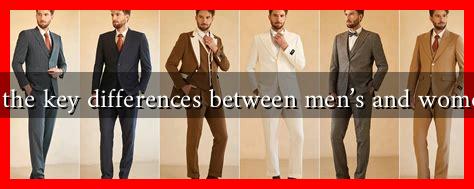-
Table of Contents
What are the Key Differences Between Men’s and Women’s Suits?
In the world of fashion, suits have long been a symbol of professionalism, power, and style. However, the design and fit of suits can vary significantly between men and women. Understanding these differences is essential for anyone looking to make informed choices about their wardrobe. This article explores the key distinctions between men’s and women’s suits, including fit, style, fabric, and cultural implications.
Fit: Tailoring and Structure
One of the most noticeable differences between men’s and women’s suits lies in their fit and tailoring. Men’s suits are typically designed with a more structured silhouette, while women’s suits often emphasize a more tailored and contoured fit.
- Men’s Suits: Generally feature broader shoulders, a straight cut through the torso, and a longer jacket length. The trousers are usually straight-legged and may have a looser fit around the hips.
- Women’s Suits: Often include a more fitted waist, tapered trousers, and shorter jacket lengths. The design may incorporate elements like peplums or cinched waists to enhance femininity.
According to a study by the Fashion Institute of Technology, 70% of women reported that finding a well-fitting suit is a significant challenge, highlighting the importance of tailored options in women’s fashion.
Style: Design Elements and Trends
The style of suits also varies between genders, influenced by cultural norms and fashion trends. Men’s suits tend to adhere to classic styles, while women’s suits often embrace a wider range of designs.
- Men’s Styles: Common styles include the two-piece suit, three-piece suit, and tuxedos. Colors are typically conservative, with navy, gray, and black being the most popular choices.
- Women’s Styles: Women’s suits can range from traditional blazers and trousers to more modern interpretations like skirt suits and jumpsuits. They often feature bolder colors and patterns, allowing for greater personal expression.
For instance, the rise of power suits for women in the 1980s, popularized by figures like Margaret Thatcher and Hillary Clinton, marked a significant shift in how women approached professional attire. Today, brands like Bonobos and Reiss offer a variety of styles catering to both men and women, reflecting evolving fashion sensibilities.
Fabric: Material Choices and Quality
The choice of fabric is another critical difference between men’s and women’s suits. While both genders may use similar materials, the weight, texture, and finish can differ significantly.
- Men’s Fabrics: Common materials include wool, cotton, and polyester blends. Men’s suits often prioritize durability and structure, leading to heavier fabrics that maintain their shape.
- Women’s Fabrics: Women’s suits may utilize lighter materials such as silk, linen, or softer wool blends. This allows for more fluid designs and comfort, especially in warmer climates.
According to a report by the Textile World, the global market for suit fabrics is projected to grow by 4.5% annually, with an increasing demand for sustainable and eco-friendly materials. This trend is particularly relevant for women’s suits, where brands are increasingly focusing on ethical production practices.
Cultural Implications: Breaking Stereotypes
The evolution of suits for both men and women reflects broader societal changes. Historically, suits were predominantly associated with masculinity, but the rise of women in the workforce has challenged these norms.
- Gender Equality: The adoption of suits by women in professional settings has been a powerful statement for gender equality. Women wearing suits in corporate environments have been shown to command more respect and authority.
- Fashion Statements: Women’s suits have become a canvas for self-expression, with many designers using them to challenge traditional gender roles. For example, the recent collections from brands like Zara showcase suits that blend masculine and feminine elements.
Conclusion: Key Takeaways
In summary, the differences between men’s and women’s suits are multifaceted, encompassing fit, style, fabric, and cultural implications. Understanding these distinctions can help individuals make informed choices that reflect their personal style and professional needs. As fashion continues to evolve, the lines between men’s and women’s suits may blur further, leading to a more inclusive approach to professional attire. Whether you’re dressing for a job interview, a business meeting, or a formal event, knowing the key differences can empower you to choose the right suit that fits your identity and purpose.


